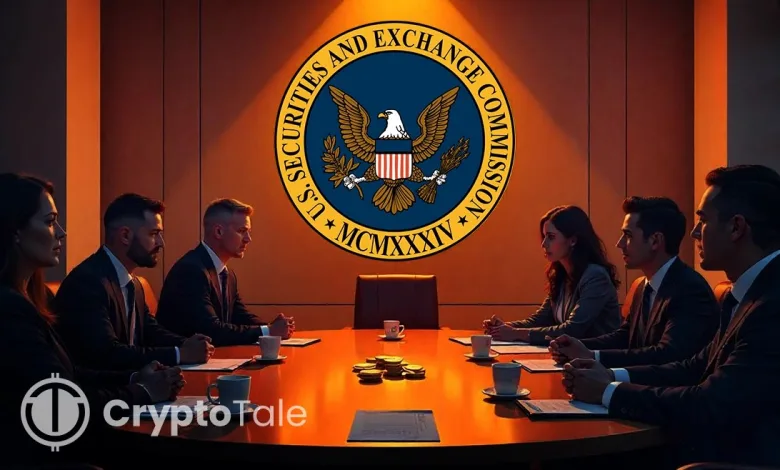SEC Declares Fully-Backed Stablecoins As Non-Securities, David Sacks

- SEC’s new stablecoin guidelines declare some as “non-securities” and exempt from reporting.
- David reveals the SEC’s stance that fully-reserved stablecoins are not considered securities.
- Crenshaw argues the SEC underestimates risks and misrepresents stablecoin realities.
The US Securities and Exchange Commission (SEC) has issued new guidelines on stablecoins, sparking praise and controversy. The guidelines state that stablecoins meeting specific criteria are “non-securities” and thus exempt from transaction reporting requirements. However, Caroline Crenshaw, an SEC commissioner known for opposing cryptocurrency-related initiatives, has raised concerns about the accuracy of the SEC’s analysis.
David Sacks on SEC’s Decision
U.S. crypto and AI czar David Sacks revealed that the SEC has determined that stablecoins with full reserves and liquid dollar backing are not securities. Blockchain transactions to mint or redeem these stablecoins do not need to be registered under the Securities Act. While the crypto industry welcomed this clarification, Crenshaw pushed back, highlighting that the SEC’s statement oversimplified the situation.
In a statement released on April 4, Crenshaw accused the SEC of underestimating the risks of USD-backed stablecoins. She said the SEC’s guidelines misrepresent the true state of the market. Crenshaw noted that the regulator failed to take into account quite high risks. She also noted the guidelines skew the picture of the stablecoin market and its risks to the opposite direction.
Crenshaw also disputed the SEC’s assertion that USD-backed stablecoins are available to retail buyers only through intermediaries. She stated that over 90% of stablecoins in circulation are sold via secondary market platforms such as crypto exchanges. This practice is the norm, not the exception, Crenshaw explained, calling the SEC’s claim misleading.
Related: SMBG Teams with Ava Labs and Fireblocks for Stablecoin Launch
In addition, Crenshaw also took issue with the SEC’s perspective on issue solvency. The SEC had also sought to assure users that stablecoin issuers can process endless redemptions as long as the asset backing matches the circulating supply. Crenshaw dismissed this notion, arguing that reserve value alone does not guarantee financial health. She emphasized that such reserves do not account for issuer liabilities or risks from proprietary financial activities.
Crypto Industry Optimism
Despite Crenshaw’s objections, many in the crypto industry expressed optimism over the SEC’s new guidelines. Token Metrics founder Ian Ballina called it a “Feels like a clear step in focusing on what really matters in the crypto space. Vemanti CEO Tan Tran wished the SEC had taken this step years ago, while Midnight Network’s Ian Kane hailed it as progress for crypto participants trying to comply with the rules.
These discussions unfold just weeks after Tether, a leading stablecoin issuer, began working with a Big Four accounting firm. The goal is to verify its reserves and confirm that its USDT stablecoin is fully backed at a 1:1 ratio. The ongoing debate highlights the need for accurate regulation in the stablecoin market.




